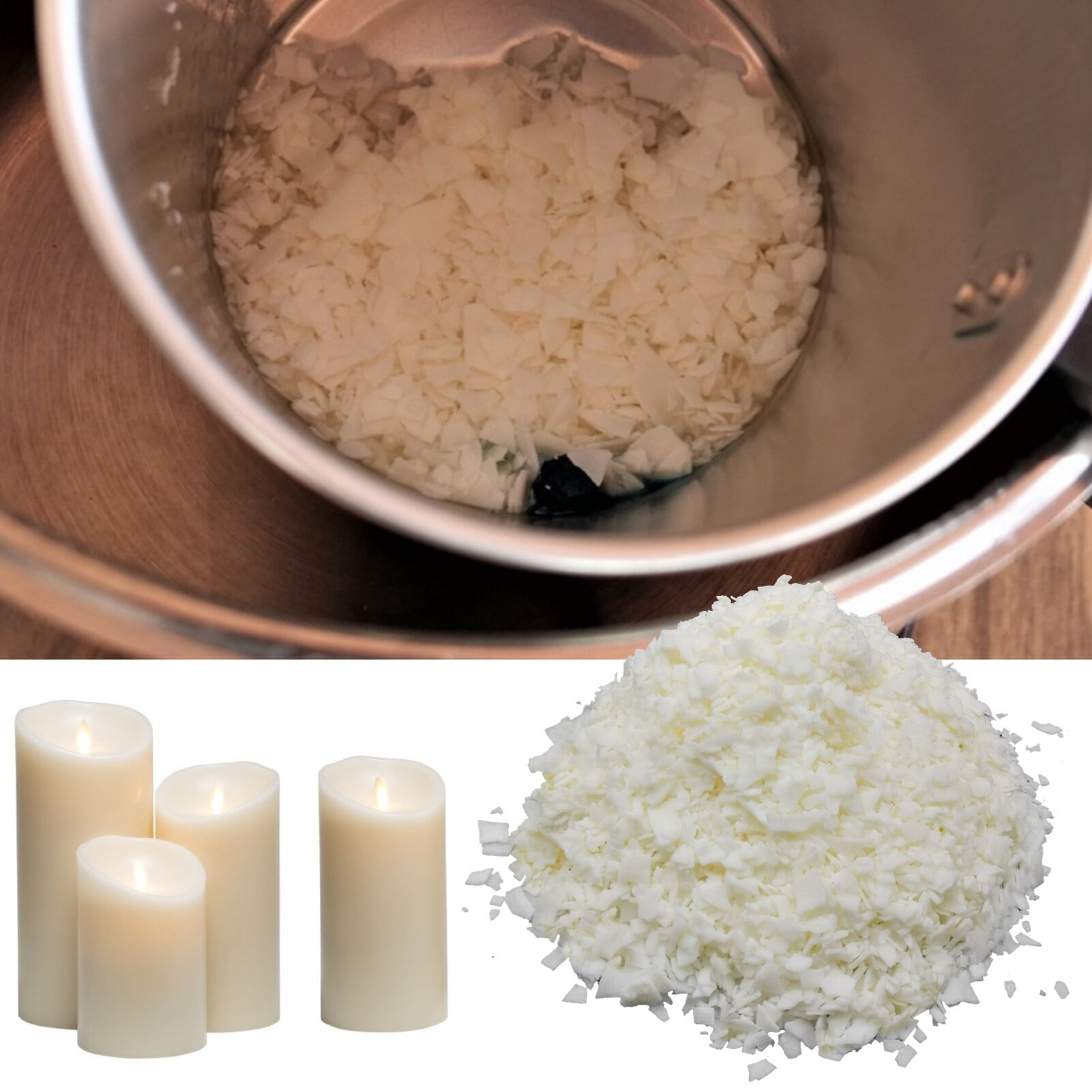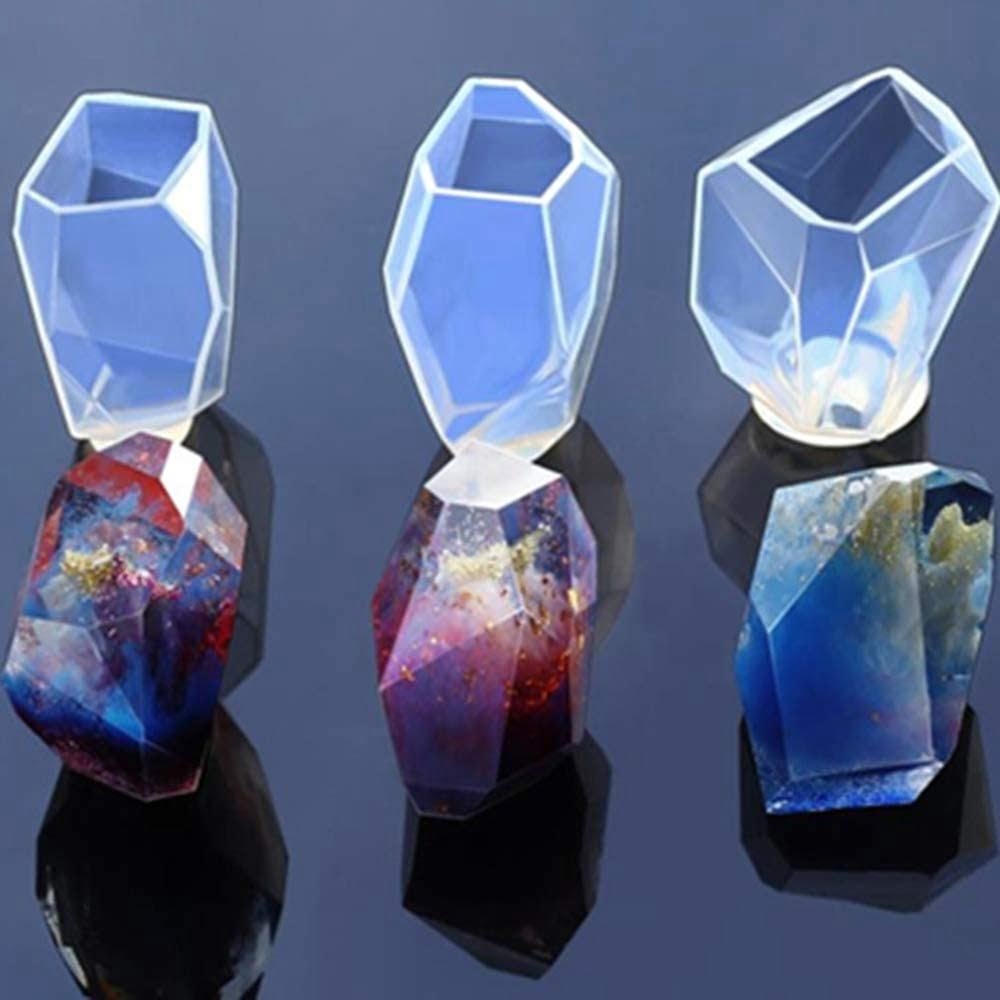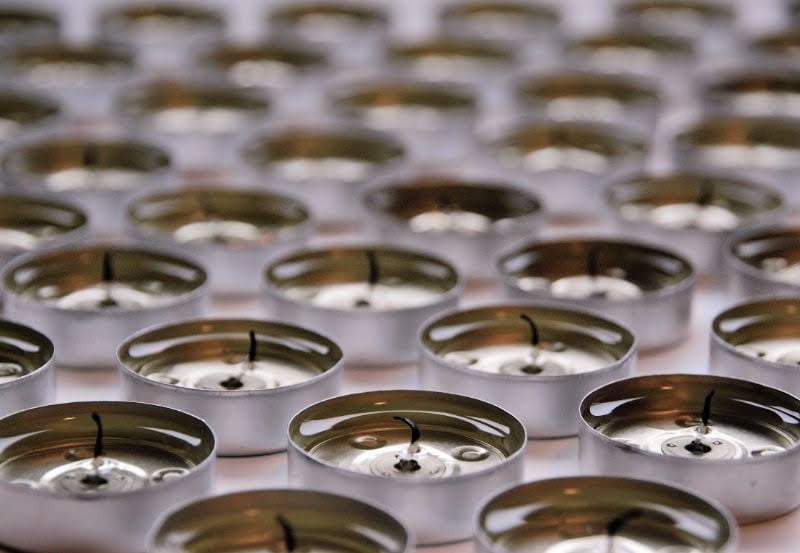Candle making is a timeless craft that has captivated hobbyists and artisans alike for centuries. Choosing the right wax is essential to creating high-quality candles that burn cleanly and evenly. When it comes to waxes for candle making, there are a variety of options available, each with its unique characteristics and benefits.
One of the key considerations in selecting a wax for candle making is its melting point, hardness, and fragrance retention. Natural waxes such as soy wax, beeswax, and coconut wax have gained popularity in recent years due to their eco-friendly nature and superior burning qualities. These waxes offer a cleaner burn compared to paraffin wax and can hold fragrance oils exceptionally well.
In this article, we will explore the different types of waxes commonly used in candle making, the benefits of using natural waxes, how to choose the right wax for your project, tips for working with various waxes, popular additives to enhance performance, safety precautions when handling waxes, and creative ways to incorporate different waxes into your candle making endeavors.
Join us on this journey into the world of waxes for candle making as we delve into the versatility and beauty they bring to this beloved craft.
Different Types of Waxes Used in Candle Making
Wax is a crucial component in candle making, as it determines the quality, scent throw, and burn time of the finished product. There are several types of waxes commonly used in candle making, each with its unique characteristics and benefits. One of the most popular choices is soy wax, known for its natural origins and clean-burning properties. Soy wax is derived from soybean oil and is a favorite among environmentally-conscious crafters.
Another common type of wax used in candle making is paraffin wax, which has been a staple in the industry for many years. Paraffin wax is derived from petroleum and is known for its excellent scent throw and ability to hold color well. However, some crafters prefer to avoid paraffin wax due to its non-renewable source and potential for releasing toxins when burned.
Beeswax is another widely-used type of wax in candle making, prized for its natural aroma and long burn time. Beeswax candles are renowned for their clean burn without producing soot or smoke.
This type of wax also has air-purifying properties when burned, making it a popular choice for those seeking a more natural option for their candles. The versatility offered by different waxes for candle making allows crafters to explore various options based on their preference for sustainability, performance, and aroma.
| Types of Wax | Main Characteristics |
|---|---|
| Soy Wax | Natural origin, clean-burning |
| Paraffin Wax | Excellent scent throw, good color retention |
| Beeswax | Natural aroma, long burn time |
Benefits of Using Natural Waxes in Candle Making
Natural waxes offer a range of benefits when used in candle making, making them a popular choice among crafters and artisans. One significant advantage of using natural waxes, such as soy wax, beeswax, or palm wax, is their eco-friendly nature. These waxes are biodegradable, renewable, and sustainable, making them better for the environment compared to petroleum-based paraffin wax. Choosing natural waxes contributes to reducing our carbon footprint and supporting a more environmentally conscious approach to candle making.
Enhanced Scent Throw
Another benefit of using natural waxes in candle making is their ability to enhance scent throw. Natural waxes have a lower melting point than paraffin wax, allowing them to hold more fragrance oil without becoming overpowering. This results in a cleaner and more pronounced scent release when the candle is burned. Additionally, natural waxes tend to burn more evenly and cleanly, producing less soot and smoke compared to synthetic alternatives.
Health Benefits for Candle Users
Using natural waxes in candle making can also offer health benefits for consumers. Unlike paraffin wax, which is derived from petroleum and may release harmful chemicals when burned, natural waxes are non-toxic and safe for use around humans and pets.
This makes candles made from natural waxes a healthier option for those who are sensitive to artificial fragrances or concerned about indoor air quality. By choosing natural waxes for candle making, crafters can create products that not only smell great but also prioritize the well-being of their customers.
How to Choose the Right Wax for Your Candle Making Project
When it comes to choosing the right wax for your candle making project, there are several factors to consider. The type of wax you use can impact the burn time, scent throw, color, and overall quality of your candles. Here are some tips to help you choose the perfect wax for your next candle making endeavor:
- Consider the type of candle you want to make – Are you looking to create pillar candles, container candles, votives, or tea lights? Different types of waxes perform better in certain types of candles. For example, soy wax is great for container candles because it adheres well to glass and retains fragrance more effectively.
- Think about the melting point – The melting point of a wax determines how well it will hold up in different environments. For example, paraffin wax has a high melting point and is great for creating sturdy pillar candles that can withstand warm temperatures.
- Check for compatibility with additives – If you plan on adding dyes or fragrance oils to your candles, make sure the wax you choose is compatible with these additives. Some waxes may not adhere well to certain fragrances or colors, affecting the overall quality of your candles.
Choosing the right wax for your candle making project is essential in achieving the desired results. Whether you prefer the natural look and clean burn of soy wax or the versatility and strong scent throw of paraffin wax, taking the time to select the perfect wax will ensure that your candles turn out beautifully and meet your expectations. Make sure to experiment with different waxes and techniques to find what works best for your unique candle making style.
Tips for Working With Different Types of Candle Waxes
Working with different types of candle waxes requires a good understanding of the unique characteristics and melting points of each type. Whether you are a beginner or an experienced candle maker, these tips will help you navigate the world of waxes for candle making.
Understanding Melting Points
Each type of wax has a specific melting point, which determines how it should be handled and poured during the candle making process. For example, paraffin wax has a lower melting point compared to soy wax. It is essential to know the melting point of the wax you are working with to avoid any mishaps during the pouring and cooling stages.
Double Boiler Method
To prevent scorching or burning your wax, consider using a double boiler method when melting your candle wax. This involves placing your wax in a heat-safe container within a pot of water on low heat. This gentle heating method helps maintain the integrity of the wax while ensuring a smooth consistency for your candles.
Adding Fragrance and Color
When working with different types of candle waxes, it is important to consider how they interact with fragrance oils and dyes. Natural waxes like soy and beeswax may require more concentrated fragrance oils compared to paraffin wax. Similarly, some waxes may not hold color as well as others, so make sure to test small batches before committing to larger quantities.
By following these tips for working with different types of candle waxes, you can create beautifully crafted candles that not only look stunning but also burn cleanly and evenly. Experimenting with various waxes and techniques will allow you to discover new possibilities in candle making and enhance your creative process.
Popular Additives to Enhance Candle Wax Performance
When it comes to candle making, the type of wax used is crucial in determining the quality and performance of the final product. In addition to selecting the right wax for your project, incorporating additives can further enhance the characteristics of the candle.
One common additive used by crafters is stearic acid, which is known for its ability to increase the hardness and opacity of candles. This additive is particularly useful when making pillar candles, as it helps them maintain their shape and structure.
Another popular additive in candle making is vybar, a polymer that aids in increasing fragrance retention and color dispersion in candles. Vybar also helps reduce frosting on candles, giving them a smoother appearance. For those looking to create scented candles with strong hot throw (the release of fragrance when the candle is lit), adding vybar to their wax can significantly improve scent distribution throughout the room.
One more widely-used additive is UV inhibitor, which helps prevent fading or discoloration of candles when exposed to sunlight or artificial light sources. By incorporating UV inhibitors into your candle wax, you can prolong the vibrancy and appearance of colored candles over time. Additionally, this additive can be beneficial for those selling candles at outdoor markets or stores with ample natural light exposure.
| Additive | Benefits |
|---|---|
| Stearic Acid | Increase hardness and opacity |
| Vybar | Enhance fragrance retention and color dispersion |
| UV Inhibitor | Prevent fading and discoloration from light exposure |
Safety Precautions When Working With Candle Waxes
When working with waxes for candle making, it is essential to prioritize safety to prevent any accidents or mishaps. Here are some important safety precautions to keep in mind when working with candle waxes:
- Always use a double boiler or a dedicated wax melting pot to melt your wax to prevent direct heat contact with the wax, reducing the risk of fire.
- Ensure proper ventilation in your workspace to avoid inhaling harmful fumes emitted during the melting and pouring process. Consider working near an open window or using a fan.
- Keep a fire extinguisher within reach in case of emergencies, and never leave melting wax unattended on the heat source.
Moreover, it is crucial to take precautions while handling hot wax and pouring it into containers. Here are some additional safety tips:
- Use heat-resistant gloves and long sleeves to protect your skin from accidental burns while handling hot wax.
- Avoid overheating the wax beyond its recommended melting point as it can lead to flare-ups or fires. Always refer to the manufacturer’s instructions for proper usage.
- Do not pour leftover wax down the sink as it can clog drains. Instead, dispose of excess wax in a designated container for solid waste disposal.
By following these safety precautions and guidelines, you can enjoy creating beautiful candles with different types of waxes without compromising your well-being. Remember that safety should always come first when engaging in any candle-making projects involving waxes.
Creative Ways to Use Different Waxes in Candle Making
One creative way to use different types of waxes for candle making is by experimenting with layering techniques. Layering involves pouring melted wax of different colors or scents into the container in layers, allowing each layer to cool and solidify before adding the next one.
This technique can create visually appealing candles with unique designs and patterns. For example, you can create ombre effects by using different shades of the same color, or you can mix complementary colors for a more vibrant look.
Another creative way to use various waxes for candle making is by incorporating different textures into your candles. You can achieve this by mixing waxes with varying melting points to create a marbled effect or adding ingredients like dried flowers, herbs, or spices to the wax mixture for a textured finish. These additions not only add visual interest but can also enhance the fragrance and overall ambiance of the candle.
Additionally, exploring the use of specialty waxes such as soy wax, beeswax, or palm wax can open up a world of possibilities for creating unique candles. These waxes each have their own distinct characteristics and properties that can be leveraged to achieve specific results.
For example, soy wax is known for its clean burn and strong scent throw, while beeswax offers a natural honey-like aroma and a beautiful golden hue. By combining different waxes strategically, crafters can customize their candles to suit their preferences and create truly one-of-a-kind pieces.
Conclusion
In conclusion, the world of candle making offers a plethora of options when it comes to choosing the perfect wax for your project. From paraffin to soy wax to beeswax, each type brings its unique characteristics and benefits to the table.
Natural waxes not only provide a cleaner burn but also showcase a more environmentally friendly approach to your candle making practice. The keyword “waxes for candle making” plays a crucial role in determining the quality and performance of your candles, so it is vital to choose wisely based on your specific needs and preferences.
Experimenting with different types of waxes can open up a whole new world of creativity in candle making. Whether you are creating scented candles, decorative candles, or even experimenting with different colors and textures, choosing the right wax is essential for achieving your desired results.
Additionally, incorporating popular additives such as fragrance oils, dyes, and botanicals can further enhance the performance and aesthetic appeal of your candles. By understanding how to work with different waxes and additives, you can create unique and personalized candles that reflect your artistic vision.
As you embark on your candle making journey, always remember to prioritize safety first. Working with hot wax requires caution and attention to detail to prevent accidents or injuries. By following proper safety precautions and guidelines, you can enjoy the process of creating beautiful candles while ensuring a safe working environment. Ultimately, the versatility and beauty of using different waxes in candle making allow you to express yourself creatively while indulging in a rewarding and fulfilling hobby or business venture.
Frequently Asked Questions
Which Wax Is Best for Candle Making?
The best wax for candle making ultimately depends on personal preference and the desired characteristics of the candles. Soy wax is a popular choice for beginners due to its ease of use, clean burn, and eco-friendly nature.
Paraffin wax is another common option known for strong scent throw and vibrant colors. Beeswax is favored for its natural aroma and air-purifying properties.
What Wax to Avoid in Candles?
One type of wax to avoid in candle making is gel wax, as it requires special equipment and expertise to work with safely. Additionally, some lower-quality paraffin waxes may contain additives that can produce harmful fumes when burned. It is important to choose high-quality waxes specifically designed for candle making to ensure a safe and successful outcome.
What Is the Easiest Wax for Beginner Candle Making?
The easiest wax for beginner candle making is often soy wax. Soy wax has a low melting point, making it easy to work with, especially for those new to candle making. It also has excellent fragrance retention and burns cleanly, making it a great choice for beginners looking to create beautiful and aromatic candles without too much difficulty.

Welcome to my candle making blog! In this blog, I will be sharing my tips and tricks for making candles. I will also be sharing some of my favorite recipes.





